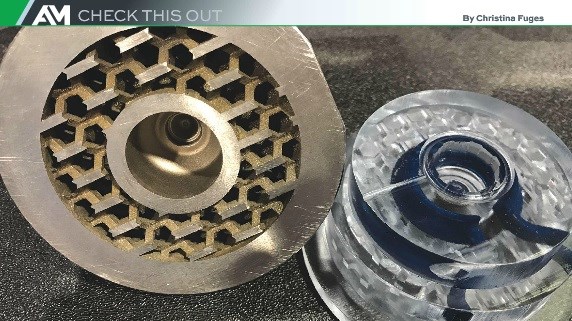Additive Manufacturing Spring Edition Focuses on Tooling
From laser optimization bringing AM to the next level for a medical mold builder to mold design enhancements leveraging 3D printing capabilities to 3D printing big industrial tools, this edition of AM has much to offer today's mold builders.

Additive Manufacturing magazine's Pete Zelinski explains it perfectly when he says that "tooling is the great underappreciated application of industrial 3D printing." He goes on to say, "Tooling deserves this attention. Tooling is the enabler to more efficient production today, even in cases where 3D printing is not the effective choice for directly producing parts. Through AM, manufacturers can make tooling that is less expensive than tools made conventionally, more capable than those conventional tools (because of features such as conformal cooling) and available in far less lead time.
But 3D-printed tooling connects to production in one other important way as well. Namely, tooling can change the culture. In many applications, speed or cost is not the obstacle to using AM; the obstacle is obtaining acceptance of a new part-making process. That acceptance might need to be won internally before it can be sought from the customer. And 3D-printed tooling provides a means of doing this.
When cost is the main objection and obstacle to investing in metal 3D printing, this issue offers up a new machine solution that costs far less than established metal AM equipment. Check out this edition of AM Magazine for an article that explains how this machine achieves this economy. Basically, it separates printing from high-temperature processing. The raw stock encases powder in plastic, and the resulting metal parts are equivalent to castings. See page 34.
Also featured are stories on a new startup built around a large-scale 3D printer that aims to offer short lead times for big industrial tools and an aerospace contractor that added an FDM 3D printer to bypass traditional options for making tools, bringing much of this work in-house.
Related Content
-
A 3D Printing Retrospective
A personal review of the evolution of 3D printing in moldmaking throughout the past 25 years.
-
How to Supply Cooling to Additive Tooling
Additive tooling provides limitless options for cooling a mold’s difficult-to-cool areas.
-
How Hybrid Tooling Accelerates Product Development, Sustainability for PepsiCo
The consumer products giant used to wait weeks and spend thousands on each iteration of a prototype blow mold. Now, new blow molds are available in days and cost just a few hundred dollars.













